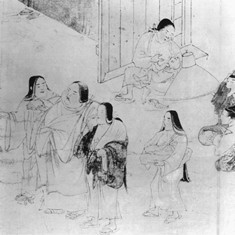 In the midst of our annual Thanksgiving pigout, we’ve often justified our gluttony on the grounds that the ensuing expansion of our girth really shouldn’t be frowned upon by society. After all, isn’t the disapproval of fatness of a modern phenomenon, egged along by the Fitness Industrial Complex? In Medieval times, we tell ourselves, our massive ingestion of food would be hailed as a mark of greatness—why else would a king go along with being called Charles the Fat?
In the midst of our annual Thanksgiving pigout, we’ve often justified our gluttony on the grounds that the ensuing expansion of our girth really shouldn’t be frowned upon by society. After all, isn’t the disapproval of fatness of a modern phenomenon, egged along by the Fitness Industrial Complex? In Medieval times, we tell ourselves, our massive ingestion of food would be hailed as a mark of greatness—why else would a king go along with being called Charles the Fat?
Alas, it seems we’ve been mistaken all these years, and that obesity has been frowned upon for many a century. A fascinating (albeit decade-old) piece from Nature breaks down how the denizens of Medieval Japan and European viewed their more rotund compadres:
It has been proposed that today’s harsh judgements of obese persons in the West are a modern development and that, in an earlier, more enlightened era, corpulence was highly regarded. The paintings of fleshy women by artists such as Rubens and Renoir are often cited in support of this view. But the products of these artists may tell us more about the interests of their patrons than about popular attitudes. When we turn to these attitudes, a different and less flattering picture emerges, with gluttony as a key feature.
We were especially intrigued by the paper’s section on Japan, a nation which recognized the food-obesity link several centuries in advance of the West. There, corpulence was seen as karmic payback for those who disobeyed Buddhist tenets—or, as in one recounted incident, simply enjoy consuming “between 50 and 60 pieces of sushi topped with ayu fish.”


Like gas stations in rural Texas after 10 pm, comments are closed.